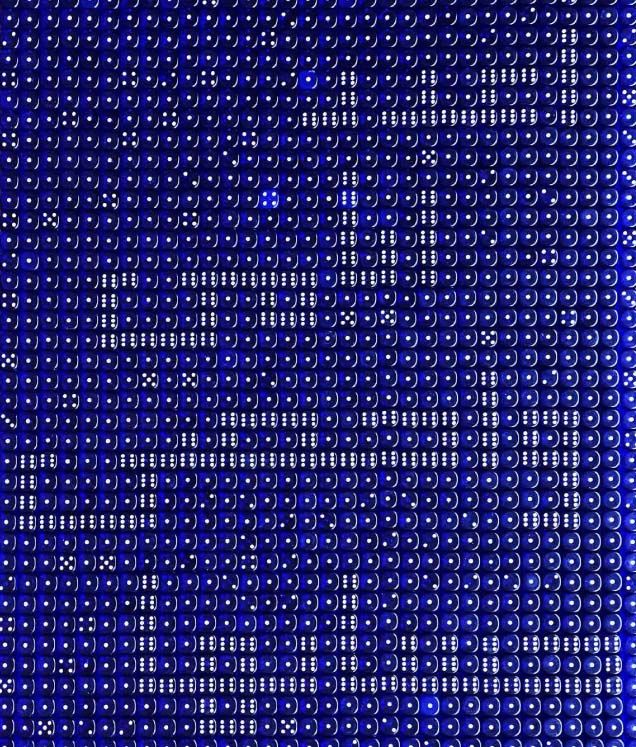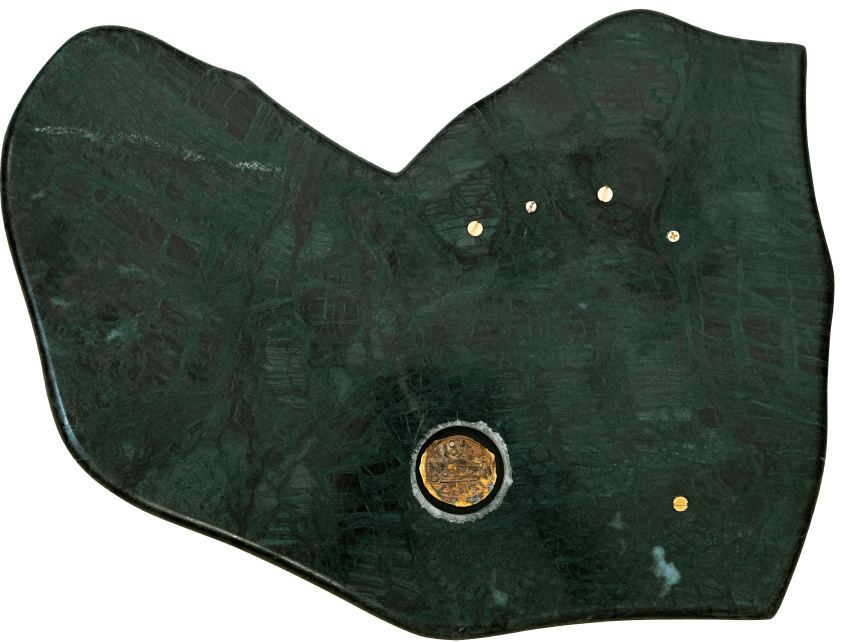The Art of Numbers
‘Tawaf 1,’ by Azra Aghighi Bakhshayeshi. From Ithra’s art collection.
Certain numbers, like number 7, hold a universal special place in people’s hearts and beliefs. Seven was special long ago, even as far back as ancient Sumerian and Babylonian civilizations, which identified seven planets and framed seven days of the week around them. Until today, we still use seven days to represent a full week. In Islam, there are references to ‘seven heavens,’ and how during the rituals of pilgrimage, Hajj and Umrah, Muslims perform the tawaf, where they go around the holy Kaaba in Makkah, seven times. The number seven is revisited across various Muslim and Arab cultural mediums such as art, architecture, folklore, and literature, "The Seven Voyages of Sinbad,” in the popular 1,001 Arabian Nights tales being a prime example.
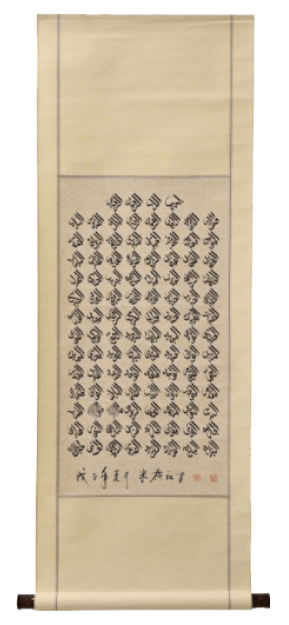
‘The 99 names of Allah,’ by Haji Noor Deen Mi Guangjiang. From Ithra’s art collection.
Numbers do capture our imagination, with numerologists using number mysticism in the same way astrologers use the signs of the Zodiac. There are numbers in art, architecture, music, poetry, nature, in life, the universe, and beyond. Numbers are so widespread, and so frequent in daily use, that it is easy to overlook their remarkable ubiquity.
Even before full words were formed, numbering and numerals existed for thousands of years using sticks, pebbles, lines, dots, symbolic scratches on stone or pottery, and all sorts of tally marks as an aid to counting. The earliest numerals were simple straight marks for the small numbers, with some special form for 10. These symbols appeared in Egypt as early as 3400 BCE and in Mesopotamia as early as 3000 BCE,
long preceding the first known inscriptions containing numerals in China (c. 1600 BCE), Crete (c. 1200 BCE), and India (c. 300 BCE). It is fascinating how number one has retained its shape and its importance throughout the ages and civilizations. It is a number with important religious relevance, with the ‘one’ associated with the creator, and other numbers related to sections, chapters and rituals in the holy books.
Al-Khwārizmī (c.778 – c.850)
Which are in fact ‘Hindu-Arabic’ numbers, to one of Islamic history’s greatest minds. Known as the ‘Father of Algebra,’ Muḥammad ibn Mūsā Al-Khwārizmī, (born c. 780 — died c. 850) was a Muslim mathematician and astronomer whose major works included introducing the ‘Hindu-Arabic numerals’, the very ones used in this magazine, and the concepts of algebra to Europe and then the rest of the world. Latinized versions of his name and of his most famous book title live on in the terms algorithm and algebra. These Hindu-Arabic numerals, set of 10 symbols—1, 2, 3, 4, 5, 6, 7, 8, 9, 0—that represent numbers in the decimal number system, originated in India in the 6th or 7th century. There are some theories linking the number to the number of angles that are drawn up in each of the numerals.
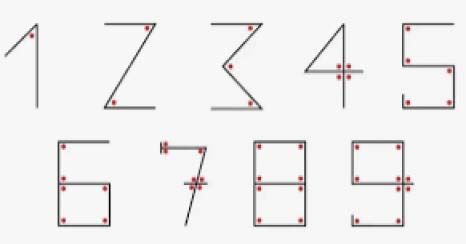
The Middle East, Central Asia, North Africa, Iberia, and parts of India from the 8th century onwards made significant contributions towards mathematics. They were able to draw on and fuse together the mathematical developments of both Greece and India. Al-Khwārizmī lived in Baghdad, where he worked at the “House of Wisdom” (Dār Al Ḥikma) under the caliphate of Al Maʾmūn. The House of Wisdom acquired and translated scientific and philosophic treatises, particularly Greek, as well as publishing original research. Abu-Yusuf Ya’qub ibn Ishaq Al Kindi (c. 801-873 C.E.) (also known in the Western world by the Latinized version of his name, Alkindus) was known as the first Islamic philosopher, but was also a scientist, mathematician, physician and a musician.
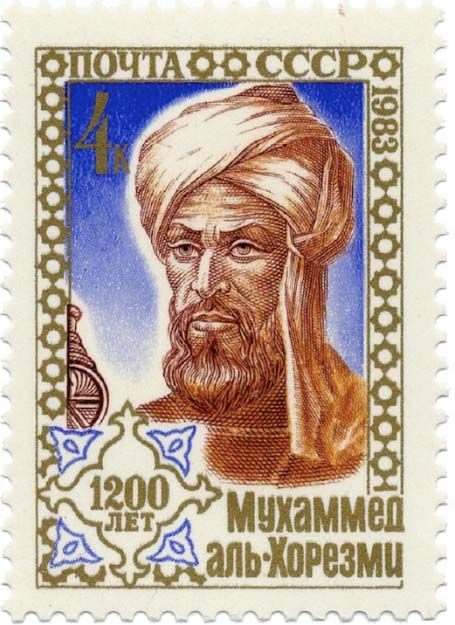
A stamp issued September 6, 1983, in the Soviet Union, commemorating Al- Khwārizmī's (approximate) 1,200th birthday.
Al-Kindī also played an important role with numbers as he popularized the Hindu-Arabic numerals among the Arabs and ‘proved’ that space and time were finite, with a paradox of the infinite. Meanwhile Leonardo of Pisa (Italian mathematician; 1175 - 1250), son of a well-known Italian merchant was better known as Fibonacci. Fibonacci traveled widely as a student, learning methods of Arabic mathematics when studying in Northern Africa and learning the system of Hindu-Arabic numerals.
Fibonacci assembled what he had learned into Liber Abaci (literally “book of the abacus”, meaning book of arithmetic), the most comprehensive book of arithmetic of its time. It laid out the benefits of the Hindu-Arabic numeral system and is partially responsible for its wide acceptance subsequently. What we take for granted today, took a long time to be established and accepted.
G.W. Leibniz (German mathematician; 1646 - 1716)
Many legendary artists used mathematics and numbers in their creations, such as versatile painters Leonardo da Vinci (1452 - 1519) and Albrecht Dürer (1471 - 1528), sculptor Michelangelo (1475 -1564), and composers Johann Sebastian Bach (1685 - 1750), and Wolfgang Amadeus Mozart (1756-1791) and many more.
Illustrating Mozart’s love of numbers, it has been said that Johann Andreas Schachtner, court trumpeter and friend of the Mozart family, once wrote about the young Wolfgang and said: "When he was doing sums, the table, the chair, the walls and even the floor would be covered with chalked numbers." And the stuff of legends: Mozart signed one of his letters as the "Friend of the House of Numbers.”
“Numbers rule the universe,” succinctly and powerfully concluded by Pythagoras (ca. 570 to ca. 490 BCE) As we celebrate the art of numbers, we pay homage to their presence and influence almost everywhere, often almost without our awareness.

